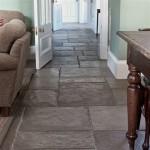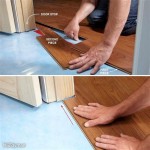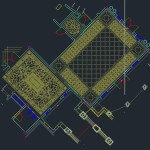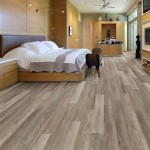Understanding the Harmonized System (HS) Code for Vinyl Floor PVC in the USA
The Harmonized System (HS) Code is a standardized numerical method of classifying traded products, used by customs authorities worldwide to identify products when assessing duties and taxes and for gathering statistics. It is crucial for businesses involved in importing and exporting goods, including vinyl flooring made of PVC (polyvinyl chloride). Incorrectly classifying a product can lead to delays, fines, and incorrect duty assessments. This article provides a comprehensive overview of the HS Code relevant to vinyl floor PVC in the United States, addressing its structure, specific classifications, and factors affecting its determination.
The HS Code consists of at least six digits and is organized in a hierarchical structure. The first two digits represent the chapter, the next two digits the heading, and the following two digits the subheading. Individual countries can add further digits to the HS Code for more detailed classifications within their tariff schedules. In the United States, the HS Code is extended to ten digits and is commonly referred to as the Harmonized Tariff Schedule of the United States (HTSUS).
When importing vinyl flooring made of PVC into the United States, accurately identifying the appropriate HTSUS code is essential. Several factors determine the correct classification, including the composition of the flooring, its construction (e.g., tiles, planks, rolls), whether it is backed or not, and whether it is printed or embossed. Understanding these nuances is paramount for ensuring compliance with U.S. Customs and Border Protection (CBP) regulations.
Key Point 1: Relevant HTSUS Codes for Vinyl Floor PVC
Several different HTSUS codes might apply to vinyl floor PVC, depending on the specific characteristics of the product. The most common and relevant sections generally fall under Chapter 39 (Plastics and articles thereof) and Chapter 59 (Impregnated, coated, covered or laminated textile fabrics; textile articles of a kind suitable for industrial use). Within those chapters, several subheadings become relevant.
One crucial distinction is whether the vinyl flooring is backed with a textile or other material. If the vinyl flooring has a textile backing, it is likely to be classified under Chapter 59. If it is composed entirely of PVC or has a backing made of plastic or other non-textile material, it likely falls under Chapter 39. This backing significantly affects the tariff rate and the specific code assigned.
Common HTSUS codes to consider include, but are not limited to:
- 3918.10.0000: Floor coverings of polymers of vinyl chloride, whether or not self-adhesive, in rolls or in the form of tiles or planks. This is a widely used code for homogenous or multi-layer vinyl flooring.
- 3918.90.0000: Wall or ceiling coverings of plastics, other than floor coverings specified above. (This is generally not for Flooring but can be mistakenly use in some situations).
- 5904.10.0000: Linoleum, whether or not cut to shape; floor coverings consisting of a coating or covering applied on a textile backing, whether or not cut to shape. (This is used when the flooring is made of a textile backing coated with PVC).
The HTSUS code 3918.10.0000 specifically refers to floor coverings of polymers of vinyl chloride. This code covers a broad range of PVC vinyl flooring products, regardless of whether they are in rolls, tiles, or planks. The term "polymers of vinyl chloride" indicates that the primary material used in the construction of the flooring is indeed PVC. The "whether or not self-adhesive" clause accounts for both glue-down and peel-and-stick vinyl flooring options.
In contrast, HTSUS code 5904.10.0000 applies when a textile backing is integral to the floor covering. Linoleum and similar floor coverings fall into this category. The key differentiator is the presence of a textile layer onto which the PVC or other coating is applied. Therefore, if the flooring consists of PVC layered directly onto a non-textile backing (e.g., plastic, foam), it is more appropriately classified under Chapter 39.
Another important factor is the flooring’s intended use. While most vinyl floor PVC is used for flooring purposes, some products might be used for wall or ceiling coverings or other applications. These alternative uses might warrant a different HTSUS classification, although applying an incorrect HTSUS code could have legal ramifications.
Key Point 2: Factors Influencing HTSUS Code Determination
Several specific factors significantly influence the determination of the appropriate HTSUS code for vinyl floor PVC. These factors include the material composition, the manufacturing process, and the intended use of the product.
Material Composition: The primary component of the flooring is, of course, PVC. However, the presence and nature of any backing material is crucial. As mentioned earlier, a textile backing shifts the classification from Chapter 39 to Chapter 59. Similarly, the presence of other plastics beyond PVC in the flooring's composition might influence the specific subheading within Chapter 39.
Manufacturing Process: The method by which the vinyl flooring is manufactured can also play a role. For example, flooring produced through a calendering process (a method of smoothing and compressing material) might be viewed differently than flooring produced through coating or laminating processes. The detailed manufacturing process should be provided to the customs broker for accurate classification.
Intended Use: While most vinyl floor PVC is intended for flooring, some products might be designed for other applications. If the product is specifically marketed for wall or ceiling coverings, it might fall under a different HTSUS code. However, the primary function should determine the appropriate HS Code.
Layering and Construction: Multi-layered vinyl flooring products pose a particular challenge. It is imperative to specify the composition and function of each layer. The layer that imparts the essential character of the product will often drive the classification.
Surface Treatment: The treatment of the floorings' external surface can influence the HTSUS code. It is important to declare clearly whether the product is printed, embossed, or otherwise treated. These surface modifications may determine the specific duty rates and tax implications.
Self-Adhesive Properties: The presence of a self-adhesive backing influences the choice of HTSUS code. Some codes, such as 3918.10.0000, include the phrase "whether or not self-adhesive," ensuring that both glue-down and peel-and-stick vinyl flooring are covered if they are predominantly made of PVC.
Key Point 3: Practical Considerations for Importers
Importers of vinyl floor PVC into the United States should take several practical steps to ensure compliance with CBP regulations and to minimize the risk of penalties or delays.
Thorough Product Description: Provide a detailed and accurate description of the vinyl flooring product to your customs broker. This description should include the material composition, construction, dimensions, intended use, and any other relevant characteristics. The more detail provided, the more likely the broker is to accurately classify items.
Consult with a Customs Broker: Engaging a qualified customs broker is highly recommended. Customs brokers possess expertise in tariff classification and can navigate the complexities of the HTSUS. A skilled broker can analyze the product’s characteristics to determine the correct HTSUS code and ensure compliance with all applicable regulations.
Request a Binding Ruling: If uncertainty exists regarding the appropriate HTSUS code, consider requesting a binding ruling from CBP. A binding ruling is a written determination by CBP that provides the correct classification for a specific product. While this process can take time, it offers certainty and protects importers from potential penalties.
Maintain Detailed Records: Keep thorough records of all import transactions, including invoices, packing lists, and product specifications. These records will prove valuable in the event of a CBP audit or inquiry. Adequate record-keeping demonstrates due diligence and can mitigate potential penalties.
Stay Updated on Tariff Changes: The HTSUS is subject to change, and tariff rates can fluctuate. Stay informed about any updates or modifications to the tariff schedule that might affect the classification or duty rates for vinyl floor PVC. Subscribing to CBP updates and engaging with your customs broker are effective ways to remain informed.
Understand the General Rules of Interpretation (GRI): The HTSUS is governed by the General Rules of Interpretation (GRI), a set of overarching guidelines that dictate how products are classified. Understanding the GRI is essential for accurate classification. These rules provide a systematic approach to classifying goods when ambiguity exists.
When importing vinyl floor PVC, it is vitally important to understand and utilize the HTSUS code system correctly. With this understanding and effective execution, import companies can experience smoother processes and achieve regulatory compliance.

4mm 180 1220mm Pvc Flooring Vinyl Floor Piso Spc Waterproof Plastic

Pvc Self Adhesive 2 0mm Vinyl Wood Grain Floor Flooring Planks

Vinyl Flooring Spc With Pvc Fireproof Decoration Material Made In China Com

Plastic Tiles Plank Pvc Spc Vinyl Flooring For Residential Commercial Usage And Floor

4mm 180 1220mm Pvc Flooring Vinyl Floor Piso Spc Waterproof Plastic

2025 Commercial Industrial Waterproof White Self Adhesive 600x600 24x24 60x60 Vinyl Flooring Tile And

Nii Floor 3mm Vinyl Flooring Code 450 1 Box 24 36 Sqft Building Materials Wall Kuala Lumpur Kl Malaysia Selangor Sentul Construction Industrial Supplies Cheng Huat Hardware Sdn Bhd

Heavy Duty Commercial Use Pvc Flooring Roll Vinyl Sheet And

Nii Floor 3mm Vinyl Flooring Code 134 1 Box 24 36 Sqft Kuala Lumpur Kl Malaysia Selangor Sentul Construction Materials Industrial Supplies Cheng Huat Hardware Sdn Bhd

Pvc Flooring Installation Completed Latest Designs
Related Posts








